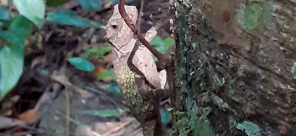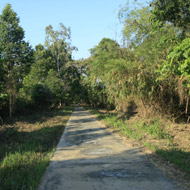Birds of Vietnam, Bird Species in Vietnam

Let's join AdventureGreen on our bird quests to learn about the different birds and bird species in Vietnam. Here you can find out more about the birding spots that these bird species are found.
- Order: Passeriformes
- Family: Emberizidae
- Genus: Emberiza
Chestnut bunting
(Sẻ đồng hung, Emberiza rutila)
The chestnut bunting (Emberiza rutila) is a passerine bird in the bunting family Emberizidae found in the East Palearctic.
The bird breeds in Siberia, northern Mongolia and north-eastern China and winters in southern China, south-east Asia and north-east India.
The genus name Emberiza is from Old German Embritz, a bunting.
The origin of the English "bunting" is unknown.
rutila: Latin rutilus for golden, red, auburn.
- Order: Passeriformes
- Family: Emberizidae
- Genus: Emberiza
Little bunting
(Sẻ đồng lùn, Emberiza pusilla)
The little bunting (Emberiza pusilla) is a passerine bird belonging to the bunting family (Emberizidae).
The little bunting breeds across the taiga of the far north-east of Europe and northern Eurosiberia to the Russian Far East.
The bird is migratory wintering in the subtropics in northern India, southern China and the northern parts of south-east Asia.
The genus name Emberiza is from Old German Embritz, a bunting.
The origin of the English "bunting" is unknown.
The specific pusilla is Latin for "very small".
- Order: Passeriformes
- Family: Emberizidae
- Genus: Emberiza
Crested bunting
(Sẻ đồng mào, Emberiza lathami)
The crested bunting (Emberiza lathami) is a species of bird in the family Emberizidae.
The bird has a wide but scattered distribution in Asia.
Traits:
- Male: rufous-winged;
- Both male and female: crested;
The genus name Emberiza is from Old German Embritz, a bunting.
The origin of the English "bunting" is unknown.
- Order: Passeriformes
- Family: Emberizidae
- Genus: Emberiza
Black-faced bunting
(Sẻ đồng mặt đen, Emberiza spodocephala)
The black-faced bunting (Emberiza spodocephala) is a passerine bird in the bunting family Emberizidae.
The bird breeds in southern Siberia across to northern China, and winters in north-east India, southern China and northern south-east Asia.
Traits:
- Male: Grey-faced, gray-faced, ashy-faced, ashy-hooded, grey-hooded;
The genus name Emberiza is from Old German Embritz, a bunting.
The origin of the English "bunting" is unknown.
The specific spodocephala is from Ancient Greek spodos, "ashes", and kephalos, "headed".
- Order: Passeriformes
- Family: Emberizidae
- Genus: Emberiza
Yellow-breasted bunting
(Sẻ đồng ngực vàng, Emberiza aureola)
The yellow-breasted bunting (Emberiza aureola) is a passerine bird in the bunting family Emberizidae.
breeds in boreal forests of Finland to Bering Sea, from the Amur River to Manchuria, N Korea, Kamchatka and Kuril Islands, migrating to Indochina.
The genus name Emberiza is from Old German Embritz, a bunting.
The origin of the English "bunting" is unknown.
The specific aureola is Latin for "golden".
- Order: Passeriformes
- Family: Emberizidae
- Genus: Emberiza
Black-headed bunting (Emberiza melanocephala)
Sẻ đồng đầu đen
The black-headed bunting (Emberiza melanocephala) is a passerine bird in the bunting family Emberizidae.
The bird breeds in south-east Europe east to Iran and winters mainly to India, some in south-east Asia.
The genus name Emberiza is from Old German Embritz, a bunting.
The origin of the English "bunting" is unknown.
melanocephala, melanocephalos:
Greek melas- "black",
kephale head,
Greek -kephalos "-headed".
- Order: Passeriformes
- Family: Leiothrichidae
- Genus: Ianthocincla
Moustached Laughingthrush
(Ianthocincla cineracea)
The moustached laughingthrush (Ianthocincla cineracea) is a species of passerine bird in the family Leiothrichidae.
The bird is found in China, India, and Myanmar.
Ianthocincla is a genus of passerine birds in the family Leiothrichidae.
Previously assigned to the genus Garrulax.
Leiothrix Leiothrichidae Ancient Greek leios meaning "smooth" and thrix meaning "hair".
The name of the genus Ianthocincla combines the Ancient Greek ionthos "young hair" or "down" with the Neo-Latin cinclus "thrush".
cineracea, cineraceum, cineraceus Latin cineraceus ash-grey (cinis, cineris ashes).
- Order: Passeriformes
- Family: Leiothrichidae
- Genus: Ianthocincla
Rufous-chinned laughingthrush
(Khướu cằm hung, Ianthocincla rufogularis)
Previously assigned to the genus Garrulax.
The rufous-chinned laughingthrush (Ianthocincla rufogularis) is a bird species in the family Leiothrichidae.
The bird ranges across the northern parts of the Indian subcontinent and some parts of Southeast Asia: Bangladesh, Bhutan, India, Myanmar, Nepal, Pakistan, Thailand, Tibet and Vietnam.
Compare:
- rufous-chinned laughingthrush (Ianthocincla rufogularis): rufous-chinned, rufous-eared, rufous lower tail coverts.
- chestnut-eared laughingthrush (Ianthocincla konkakinhensis): rufous-eared.
Leiothrix Leiothrichidae Ancient Greek leios meaning "smooth" and thrix meaning "hair".
The name of the genus Ianthocincla combines the Ancient Greek ionthos "young hair" or "down" with the Neo-Latin cinclus "thrush".
rufogularis: Latin rufus red; Latin gularis throated (gula: throat);
- Order: Passeriformes
- Family: Paradoxornithidae
- Genus: Fulvetta
Spectacled fulvetta
(Lách tách ngực nâu, Lách tách bốn mắt, Fulvetta ruficapilla)
The species of this genus are closely related to the parrotbills.
The spectacled fulvetta (Fulvetta ruficapilla) is a bird species in the family Paradoxornithidae.
The bird is found in China, Vietnam.
Paradoxornithidae: puzzling, paradox bird; Greek paradoxos extraordinary; ornis bird.
Fulvetta: probably from Latin fulvus: tawny, yellowish-brown.
ruficapilla, ruficapillum, ruficapillus Latin rufus red, ruddy; -capillus -capped (capillus hair of the head).
- Order: Passeriformes
- Family: Paradoxornithidae
- Genus: Fulvetta
Grey-hooded fulvetta
(Lách tách mũ xám, Fulvetta cinereiceps)
The genus was recently reestablished for the typical fulvettas, which had, for long, been placed in in the Timaliidae (Old World babbler) genus Alcippe.
The species of this genus are closely related to the parrotbills.
The grey-hooded fulvetta (Fulvetta cinereiceps) is a bird species in the family Paradoxornithidae.
Traits:
- Grey-hooded (head and neck);
Paradoxornithidae: puzzling, paradox bird; Greek paradoxos extraordinary; ornis bird.
Fulvetta: probably from Latin fulvus: tawny, yellowish-brown.
cinereiceps: Latin cinereus ash-coloured; -ceps -headed (caput head).
- Order: Passeriformes
- Family: Paradoxornithidae
- Genus: Fulvetta
White-browed fulvetta
(Lách tách mày trắng, Fulvetta vinipectus)
The white-browed fulvetta (Fulvetta vinipectus) is a bird species in the family Paradoxornithidae.
The bird ranges across the Indian subcontinent and Southeast Asia, and is endemic to Bhutan, India, Myanmar, Nepal and Vietnam.
Paradoxornithidae: puzzling, paradox bird; Greek paradoxos extraordinary; ornis bird.
Fulvetta: probably from Latin fulvus: tawny, yellowish-brown.
vinipectus Latin vinum, vini wine; Latin pectus for "breast".
- Order: Passeriformes
- Family: Monarchidae
- Genus: Hypothymis
Black-naped monarch
or black-naped blue flycatcher (Dớp ruồi xanh gáy đen, Hypothymis azurea)
The black-naped monarch or black-naped blue flycatcher (Hypothymis azurea) is a slim and agile passerine bird belonging to the family of monarch flycatchers found in southern and south-eastern Asia.
The black-naped monarch breeds across tropical southern Asia from Iran and Sri Lanka east to Indonesia and the Philippines. In Vietnam, the bird is found at the Cat Tien National Park.
The word Hypothymis is from the Ancient Greek hupothumis, the name of an unidentified bird mentioned by the playwright Aristophanes.
The specific epithet azurea is from the Medieval Latin azureus meaning "azure-coloured" or "azure-blue".






































